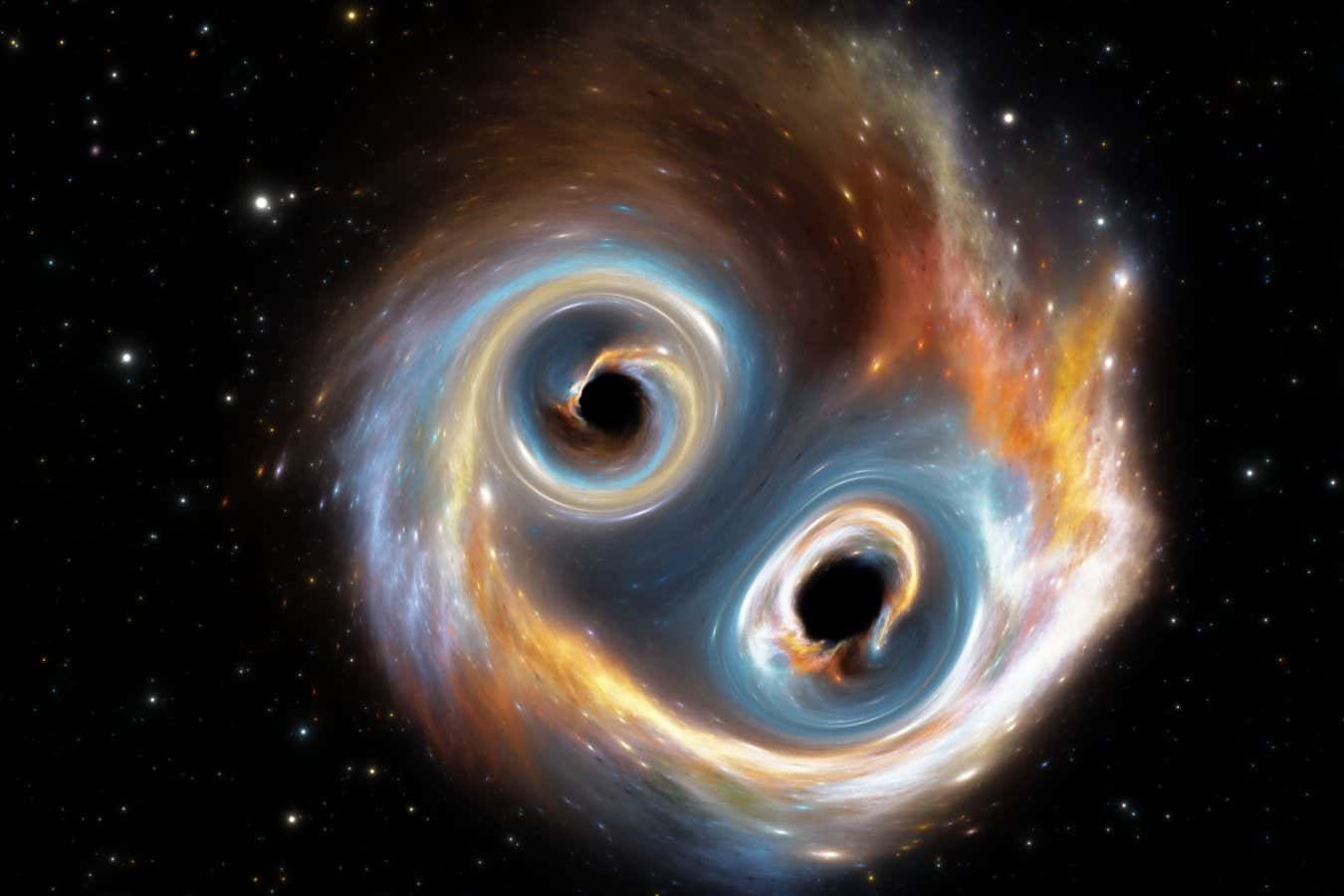
Illustration of merging of black holes
Shutterstock / Jurik Peter
A record-breaking black hole smash-up just expanded our view of the universe’s most extreme inhabitants.
Since the Laser Interferometer Gravitational-Wave Observatory (LIGO) started detecting gravitational waves – ripples in the fabric of physical reality – 10 years ago, it has captured nearly 100 collisions between pairs of black holes. On 23 November 2023, LIGO picked up one such signal that was “extraordinary and puzzling to interpret”, says Sophie Bini at the California Institute of Technology. She and her colleagues eventually determined it was produced by the most massive black hole merger ever detected.
One of the colliding black holes was approximately 100 times as massive as the sun, while the other reached nearly 140 solar masses. The previous record was held by a black hole merger roughly half as massive. Team member Mark Hannam at Cardiff University in the UK says not only were the black holes enormous, but they were also spinning very quickly, which puts them at the edge of what we can anticipate spotting in space based on the mathematical models we have of the universe.
These black holes’ masses are too high for them to have formed by collapsing directly from an ageing star, so there is good reason to believe they are the products of past mergers between smaller black holes, says Hannam. “There may have been several successive mergers,” he says.
“Ten years ago, we were surprised that black holes of 30 solar masses exist. Here are black holes of more than 100 solar masses, which is just spectacular,” says Davide Gerosa at the University of Milano-Bicocca in Italy. Gravitational wave signals from massive and fast-spinning black holes are shorter than those produced by smaller ones, so it is also more challenging to detect them, he says. Bini presented this work at the Edoardo Amaldi Conference on Gravitational Waves in Glasgow, UK on 14 July.
Hannam and Bini both say in order to fully understand the new signal, including determining the black holes’ origins, we will need future observations of similarly dramatic mergers. LIGO has detected an increasing number of black hole mergers with each upgrade, so it will probably identify more cosmic record-breakers going forward. However, in May the Trump administration proposed closing half of the facility, which would, in Hannam’s view, make detecting signals like the new one nearly impossible.
Topics:
Source link : https://www.newscientist.com/article/2488074-ligo-has-spotted-the-most-massive-black-hole-collision-ever-detected/?utm_campaign=RSS%7CNSNS&utm_source=NSNS&utm_medium=RSS&utm_content=home
Author :
Publish date : 2025-07-14 00:01:00
Copyright for syndicated content belongs to the linked Source.